Developer Offer
Try ImaginePro API with 50 Free Credits
Build and ship AI-powered visuals with Midjourney, Flux, and more — free credits refresh every month.
How ChatGPT 5 Redefines Search Marketing Strategy
The latest iteration of OpenAI's language model, ChatGPT-5, is now rolling out to its massive user base of over 700 million people weekly. With every major AI release comes a wave of hype and speculation, but for digital marketing professionals, the crucial question is how this technology will reshape the way consumers discover, research, and purchase products.
After extensive use of ChatGPT and close observation of its competitors like Google, Perplexity, Claude, and Grok, a clear trend has emerged: winning in the age of AI search goes beyond traditional keywords and backlinks.
Successful brands are now focusing on building deep topical authority, securing third-party mentions, maintaining a strong presence on social media and YouTube, and actively shaping the narrative around their brand. In essence, they are optimizing to be the go-to recommendation in AI-generated answers, regardless of who is asking.
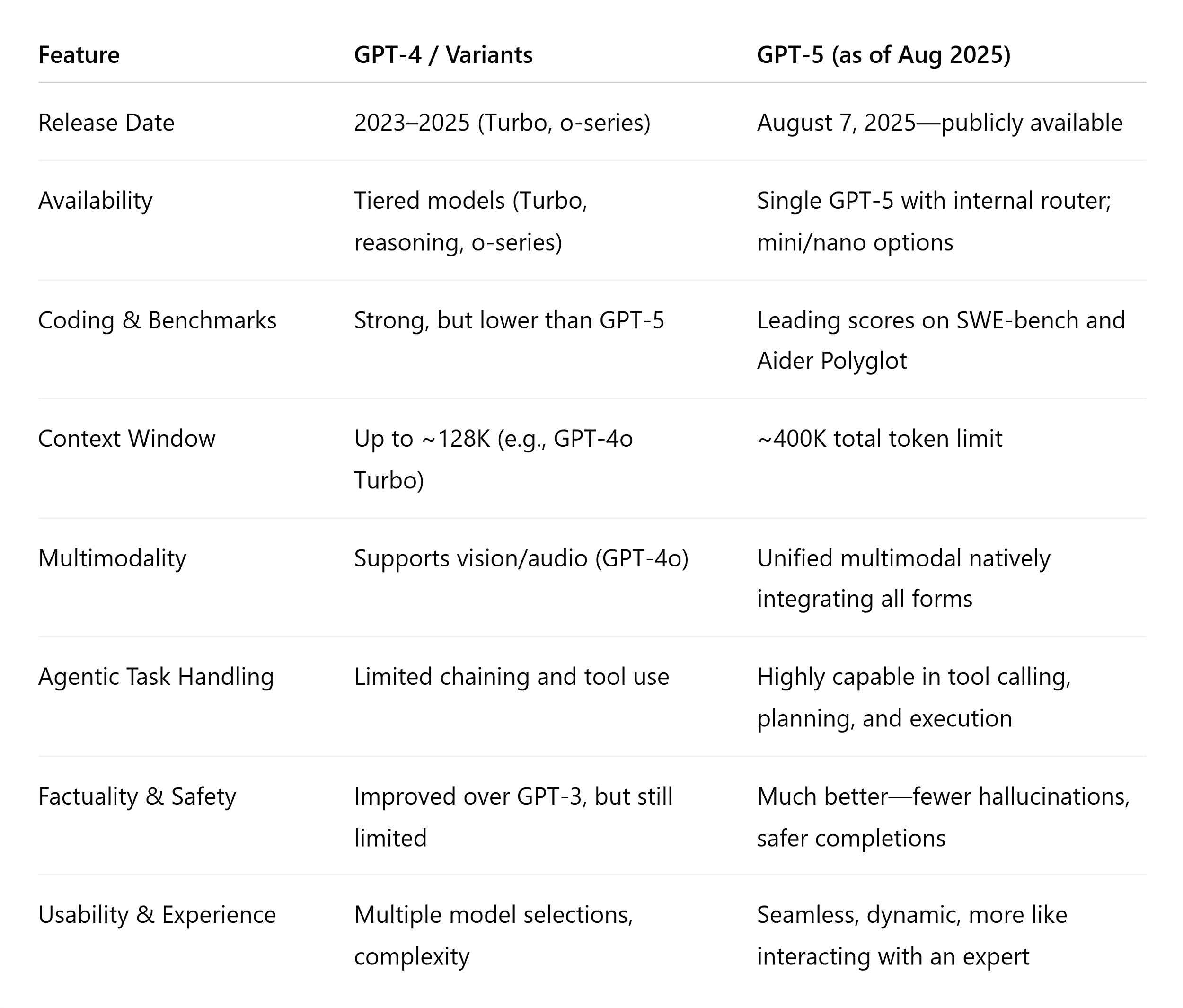
Unpacking the New Features of ChatGPT-5
While GPT-5 is a clear improvement over its predecessor, the initial consensus among marketers and developers is that it's more of an evolution than a revolution. However, it delivers notable advancements in several key areas.
Here’s a look at what’s new:
Overall Capabilities
As OpenAI's Sam Altman puts it, GPT-4 was like a college student, whereas GPT-5 is like a PhD-level expert in any topic you choose. This enhanced capability will be widely available to free users, albeit with some limitations. The new model is also significantly faster for basic queries and automatically selects the best mode for a given task, streamlining the user experience.
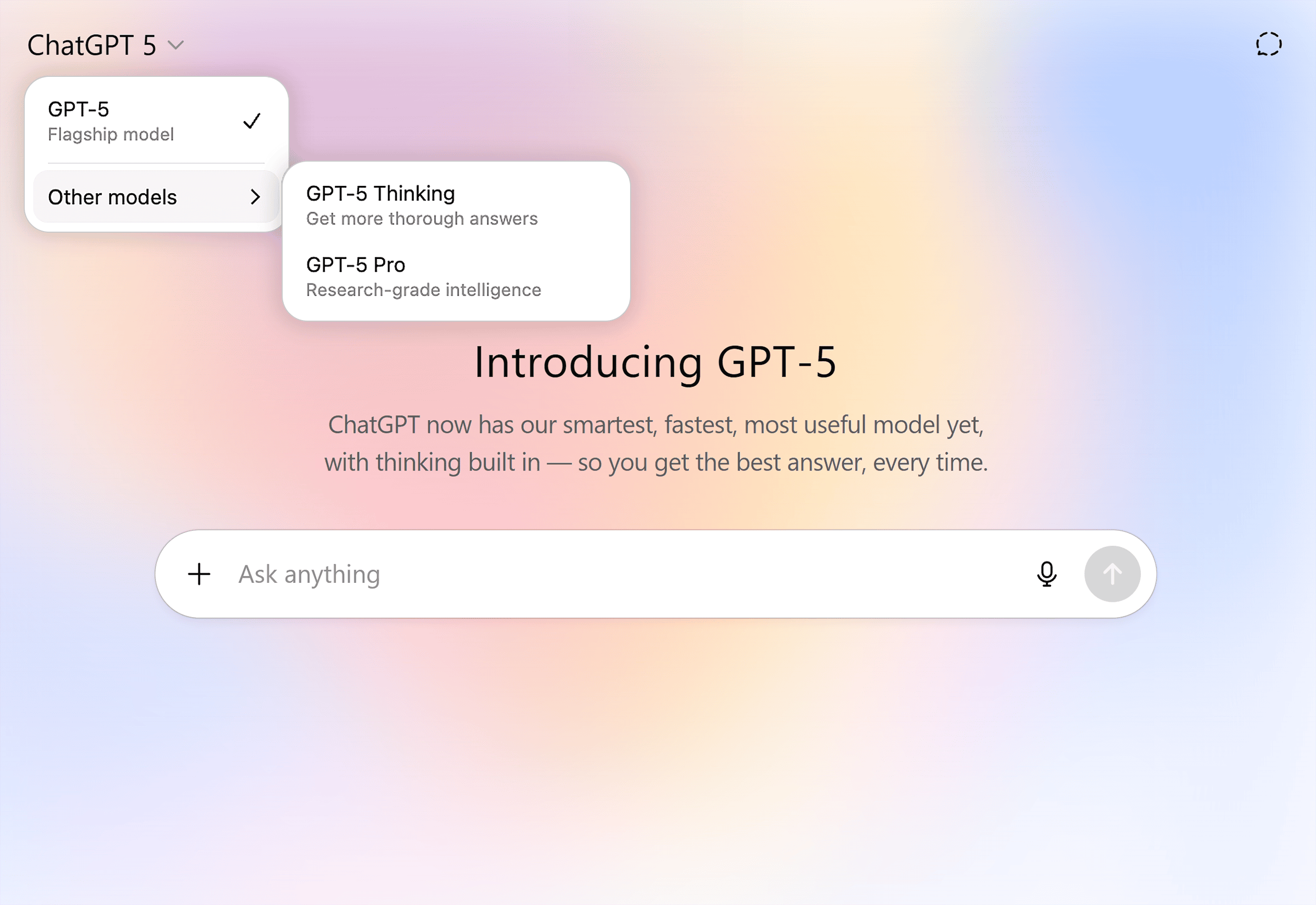
Better Writing
OpenAI highlights that GPT-5 produces better, more natural-sounding content. For SEOs and marketers, this points to improved AI-assisted content creation. Crucially, GPT-5 is far more accurate, hallucinating 4 to 10 times less often than previous models. With its "thinking" mode, the error rate on standard prompts drops to just 4.8%, making it a much more reliable tool for research and planning. Still, its output is not a substitute for human-reviewed, high-quality content.
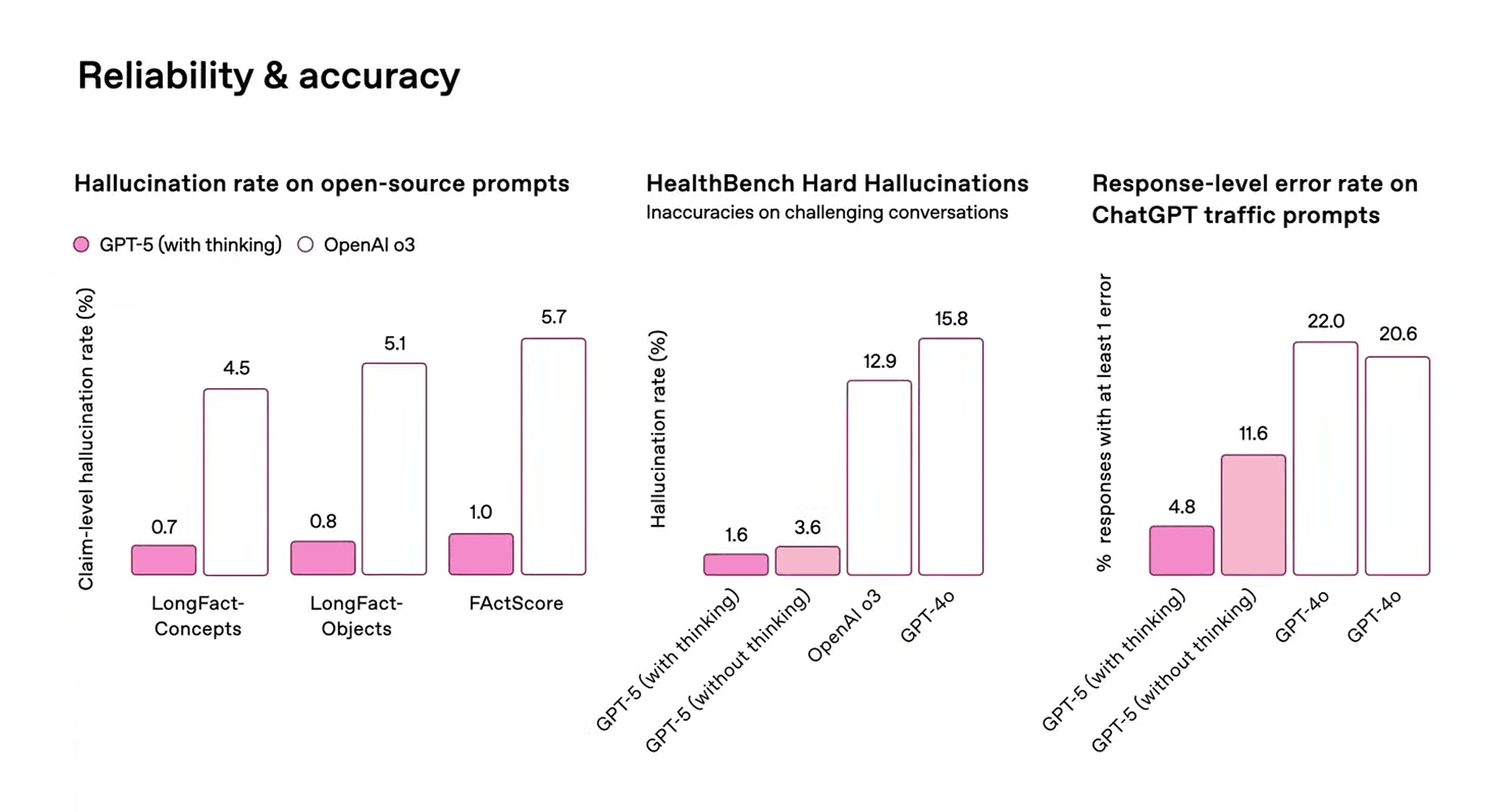
Coding
The most significant improvements are in math and coding. OpenAI appears focused on competing with Google's Gemini and Anthropic's Claude in this area. These advanced coding abilities can be used for custom applications, such as creating a personalized workout app based on an individual's fitness data.
Voice Mode Enhancements
Users will have more control over their interactions, with the ability to choose communication styles like "concise and professional" or "thoughtful and supportive."
Memory
ChatGPT's memory is being enhanced to better understand what is meaningful to you, providing more context and delivering more personalized responses. An upcoming integration with Gmail and Google Calendar promises to be a powerful tool for business organization and productivity.
Safety
Safety training has been completely overhauled, making GPT-5 significantly less deceptive. The model now operates with more nuance than the previous binary choice of complying or refusing. OpenAI has introduced "safe completions," a concept that aims to maximize helpfulness within safety constraints and provide explanations when it must refuse a request.
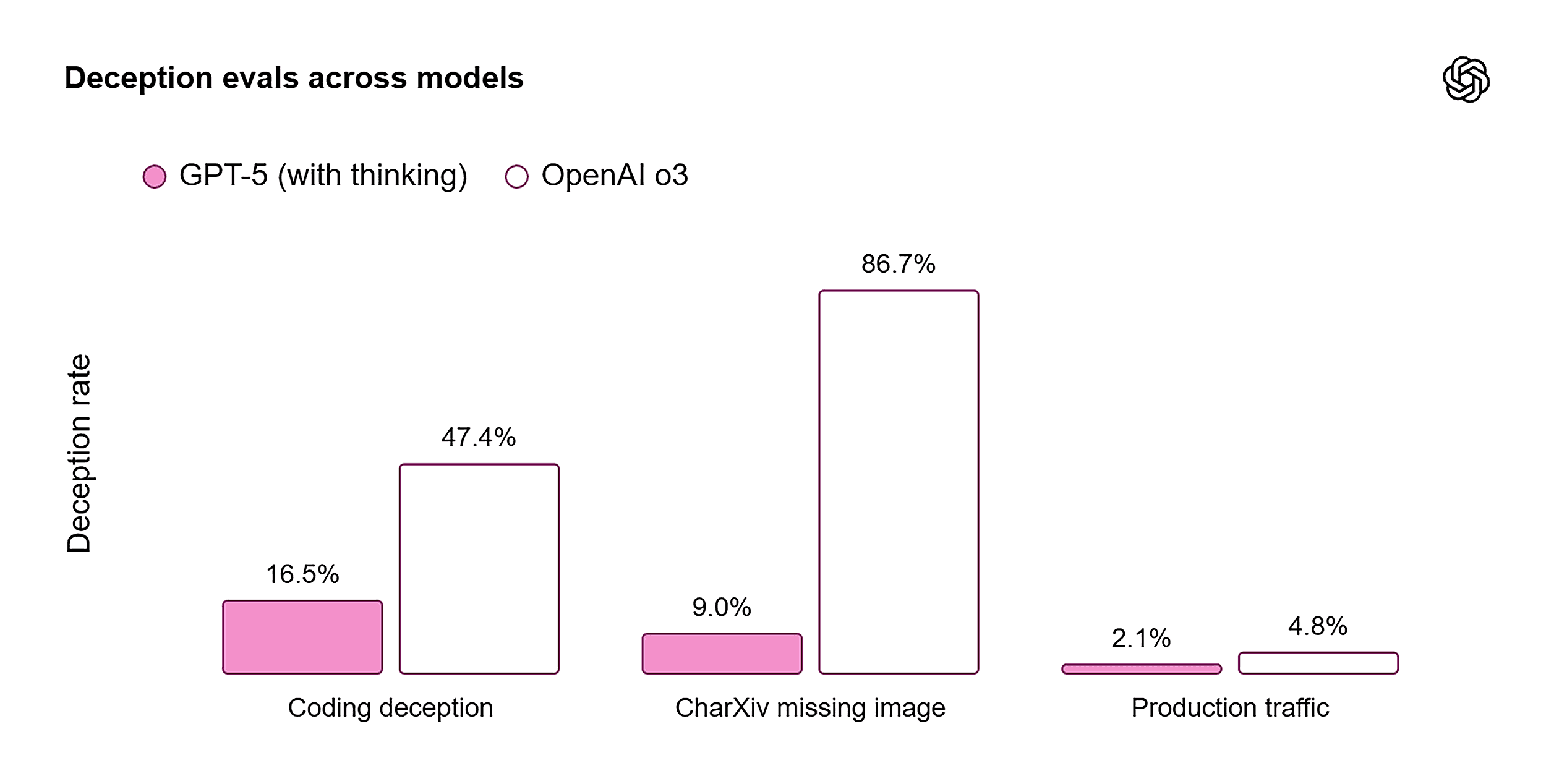
Knowledge Cutoff
According to OpenAI’s official documentation, the model's training data extends to October 1, 2024. This gives it a better understanding of recent events compared to GPT-4o's October 2023 cutoff, but real-time data will still be needed for events in 2025.
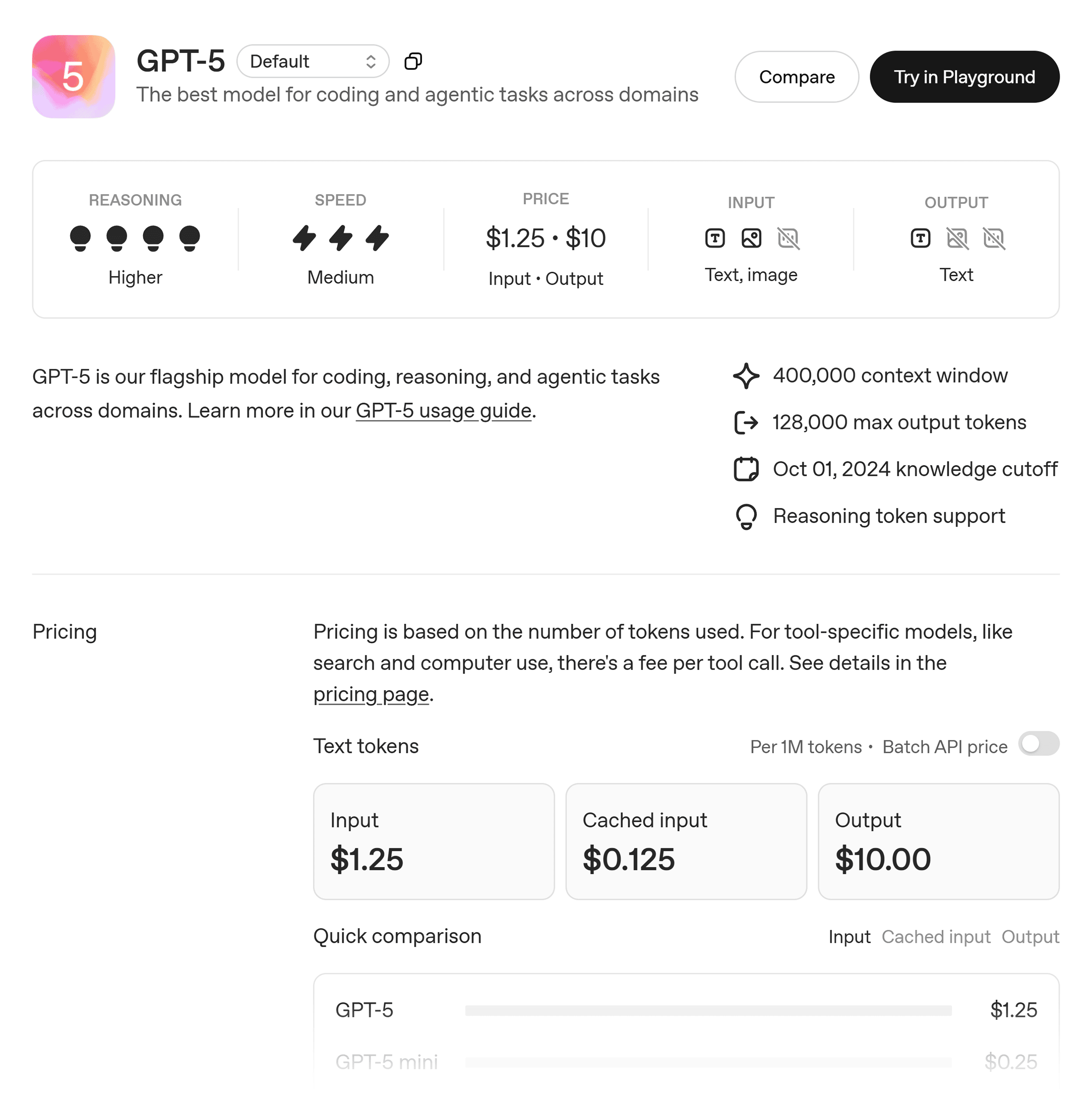
What Marketers Need to Know About ChatGPT-5
ChatGPT-5 is a significant step forward, but the fundamental principles for marketers remain the same. Your strategy still relies on core concepts of visibility and authority.
1. ChatGPT-5 Still Relies on Search Engines
While the exact mix of data sources for live lookups is unknown, it likely includes Google, Bing, and OpenAI's own systems. The takeaway for marketers is clear: to be cited in AI answers, you must be findable in traditional search engines. AI optimization doesn't replace SEO; it makes it a prerequisite for getting recommended.
2. AI Visibility Is a Multi-Platform Challenge
ChatGPT currently leads in user numbers, but the AI search landscape is fragmented. Google's AI features, like AI Overviews and its chat-based AI Mode, are reaching a significant portion of queries. Meanwhile, competitors like Claude, Perplexity, and Grok are gaining market share.
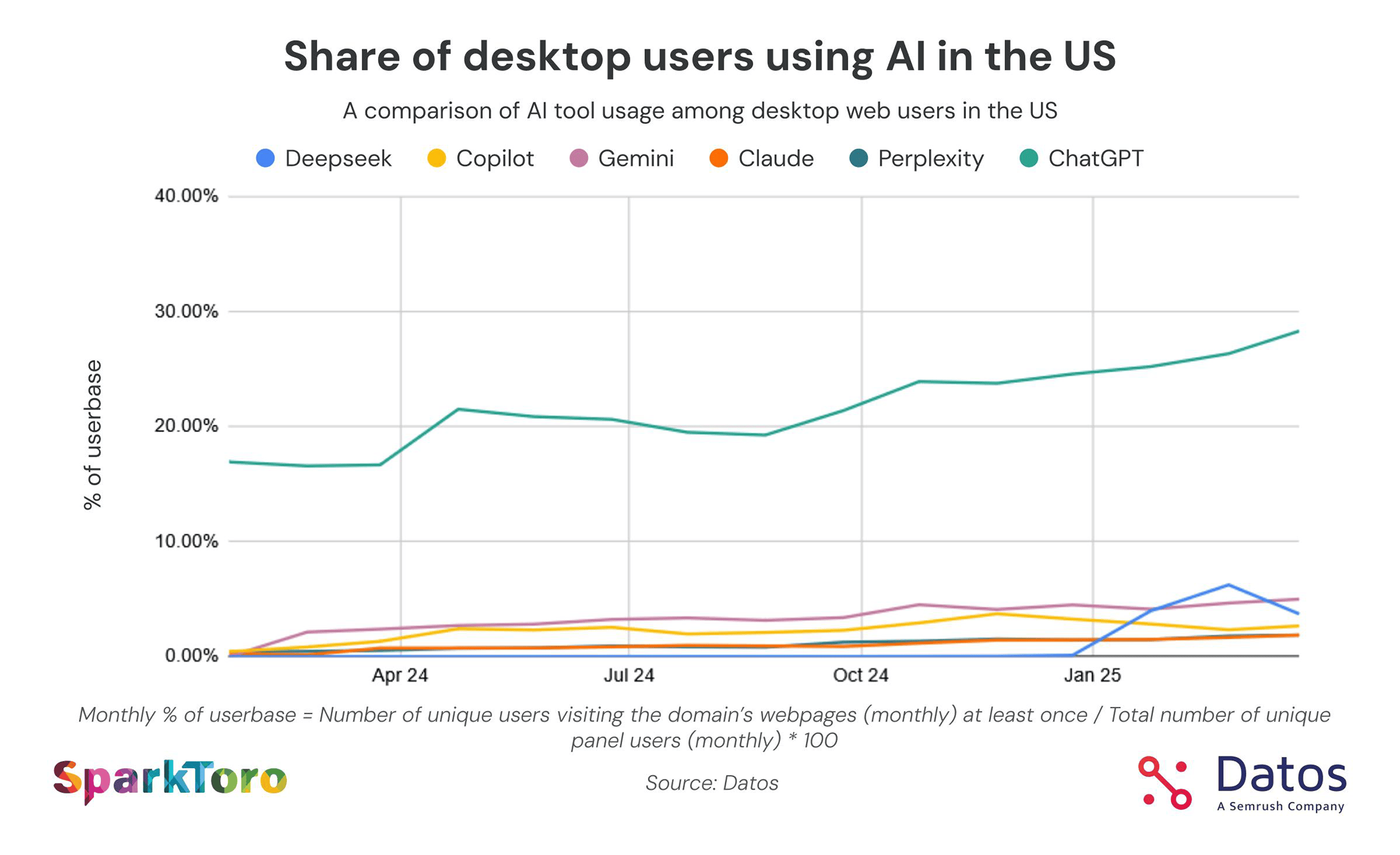
Your strategy must account for discovery across all generative engines. A narrow focus on ChatGPT means you could be invisible to customers using other platforms.
3. Brand Mentions Are More Valuable Than Backlinks
Search engines value links, but LLMs value mentions. When your brand consistently appears in high-quality, well-structured, and relevant content, it gets pulled into more AI-generated answers. To future-proof your visibility, focus on publishing content that earns natural mentions and strengthens your authority in your category.
You can use a tool like Semrush’s AI SEO Toolkit to discover how your brand stacks up against competitors in AI citations across various platforms.
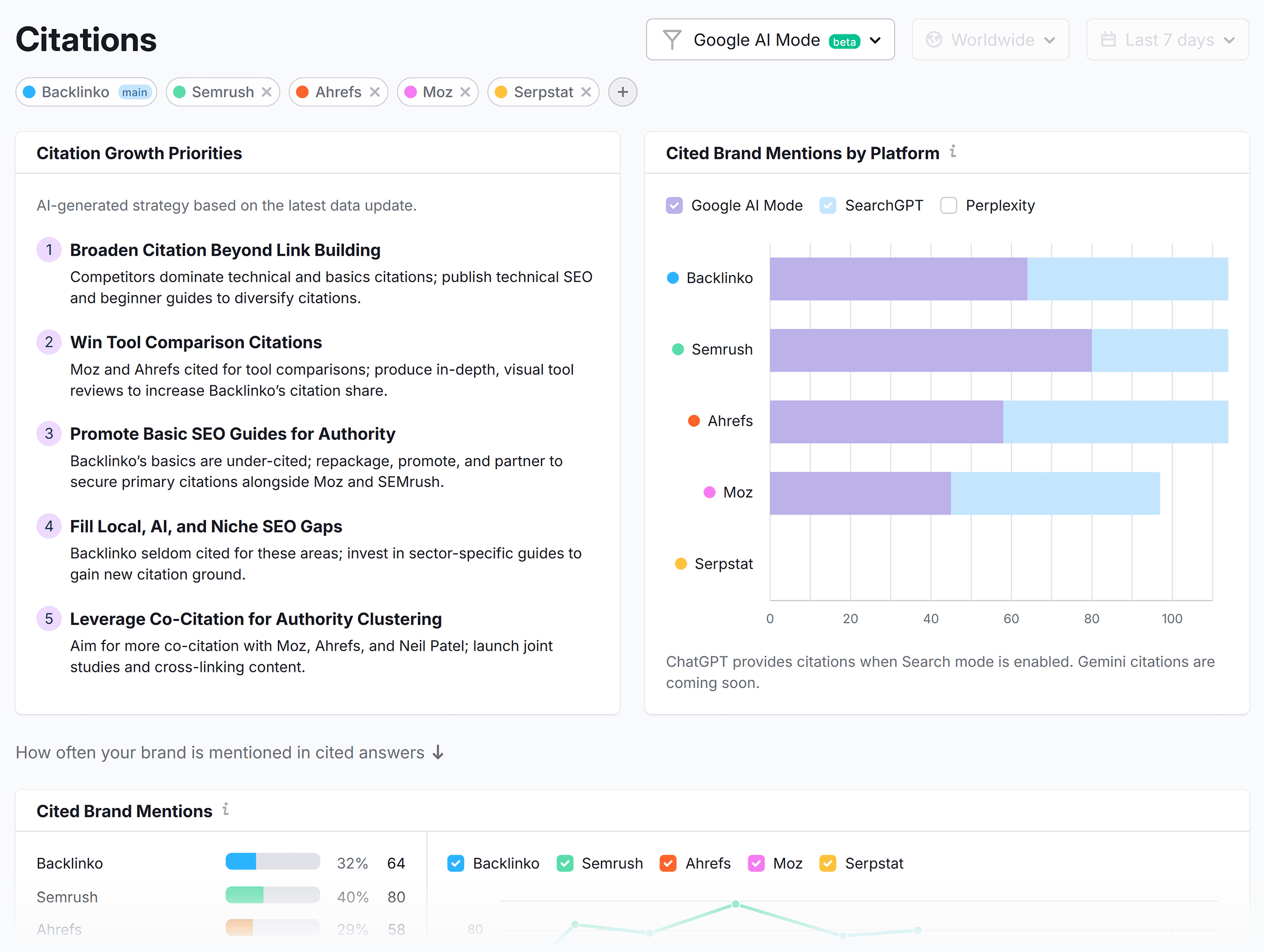
4. Prompts Are the New Keywords
People interact with LLMs using conversational language. Instead of searching for "best bed sheets," they ask, "What are the comfiest bed sheets that don’t get too hot at night?" Winning brands are those that appear when customers ask these high-intent questions.
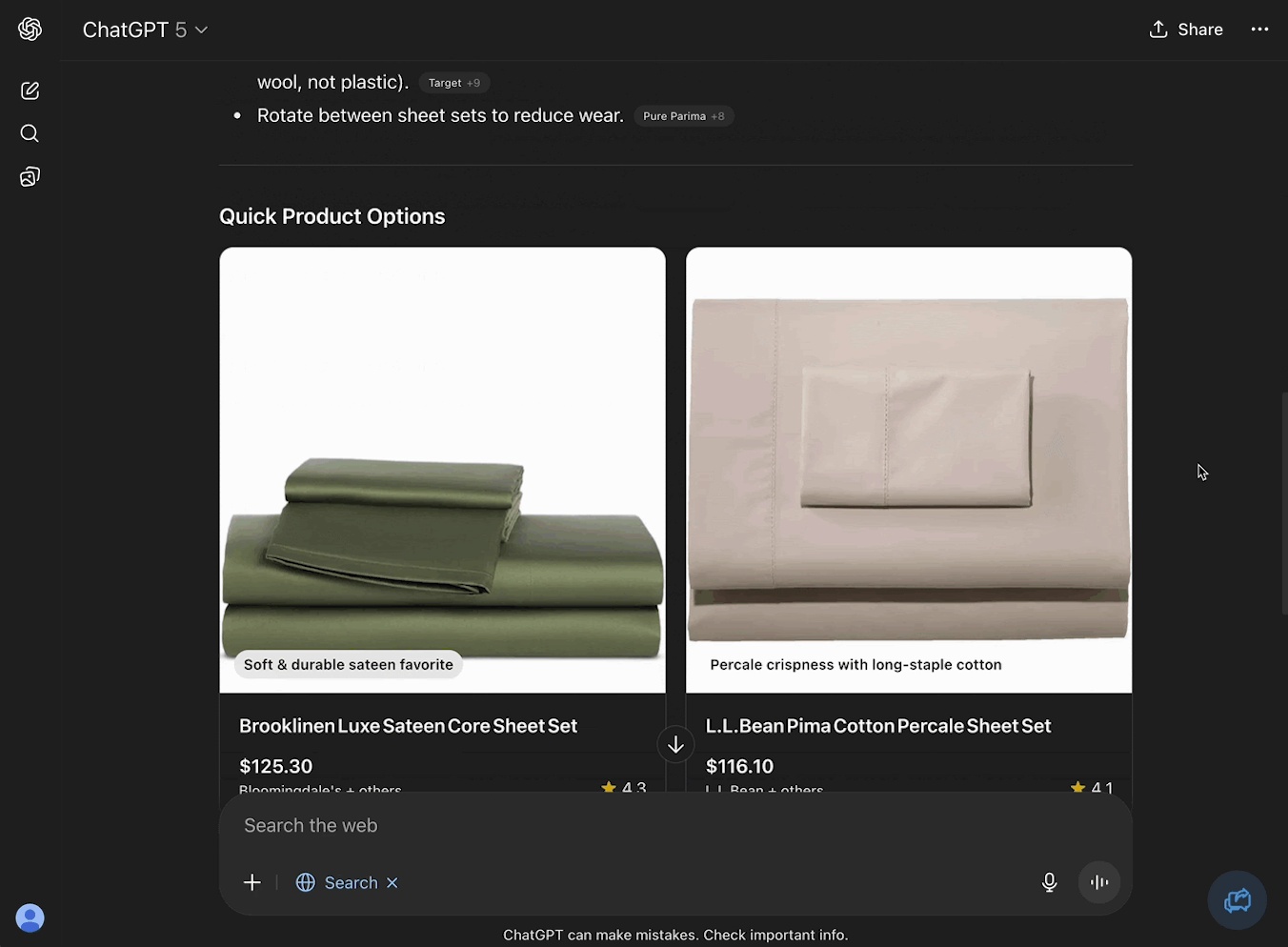
Build a library of prompts based on customer needs and use it to create new content and optimize existing pages. Tools like the previously mentioned Semrush AI SEO Toolkit can help you find the questions real customers are asking.
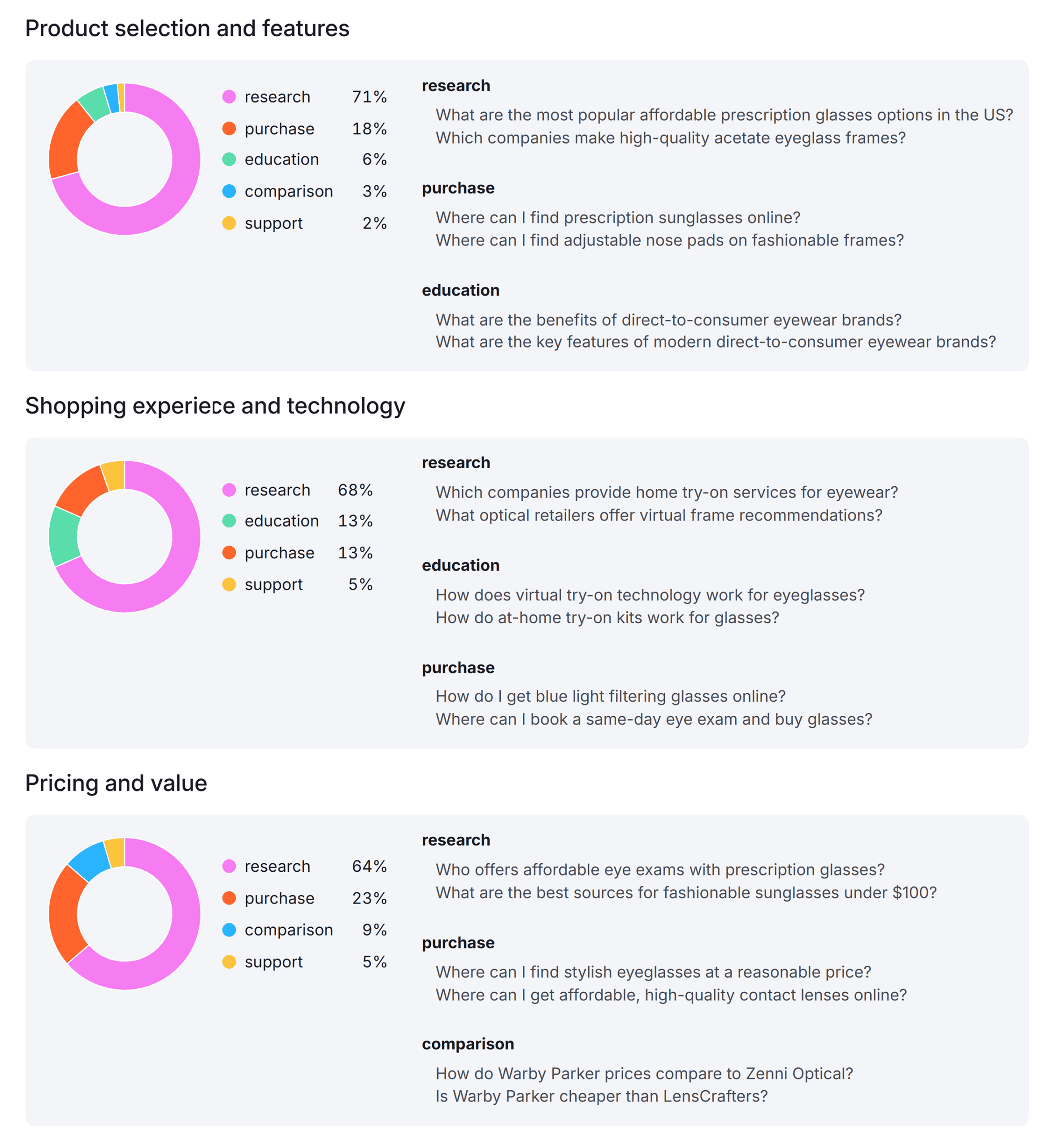
From there, you can monitor your share of voice across ChatGPT, Google's AI Mode, Perplexity, and Gemini to track your progress.
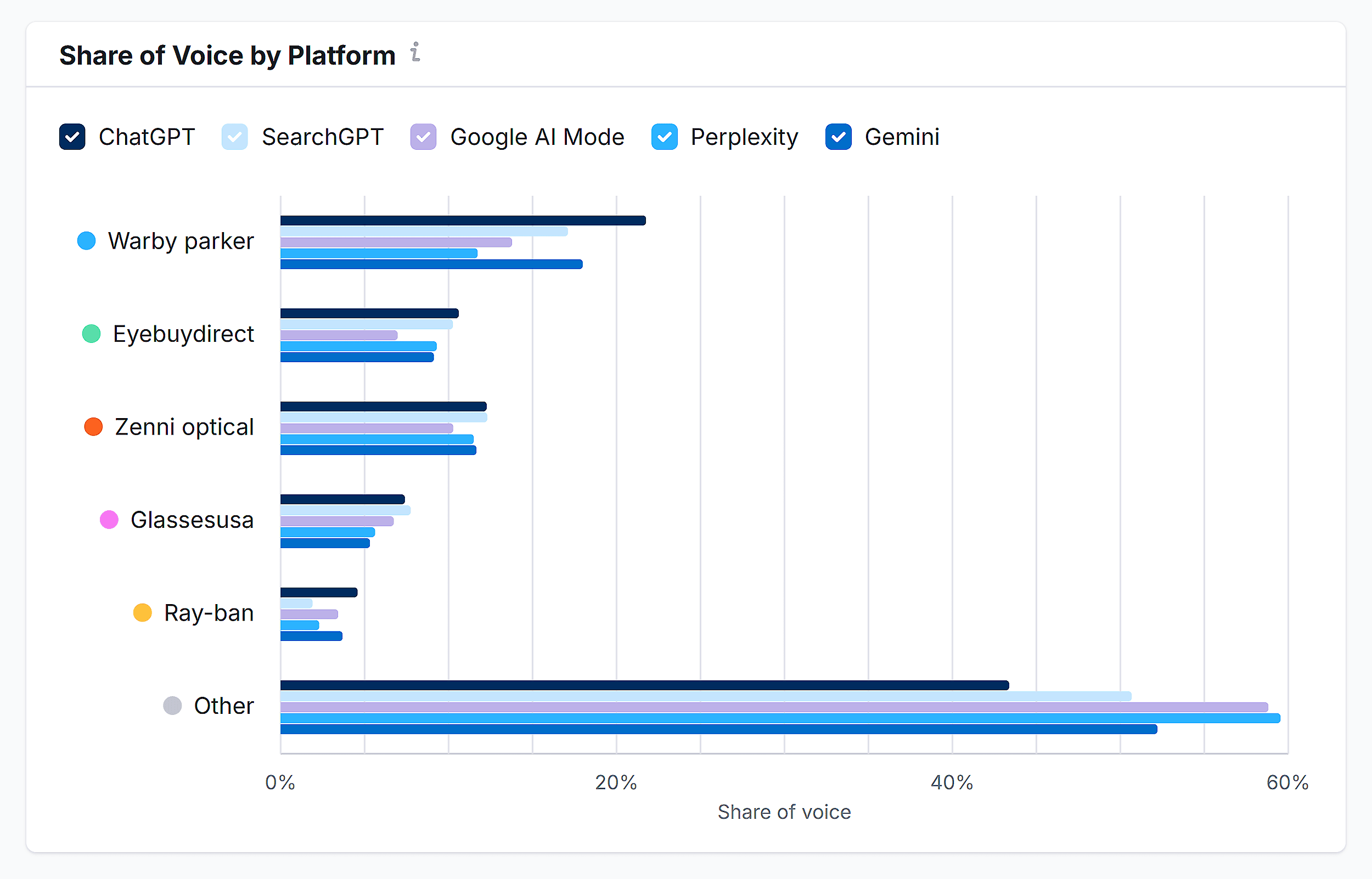
How to Succeed in the Age of GPT-5
While GPT-5 is faster, smarter, and more powerful, the core challenge for marketers remains unchanged. If your brand lacks clarity, trust, and visibility in high-quality content, you will be invisible in AI-generated answers. To learn more about mastering this new landscape, explore our guide to LLM visibility.
Compare Plans & Pricing
Find the plan that matches your workload and unlock full access to ImaginePro.
| Plan | Price | Highlights |
|---|---|---|
| Standard | $8 / month |
|
| Premium | $20 / month |
|
Need custom terms? Talk to us to tailor credits, rate limits, or deployment options.
View All Pricing Details

